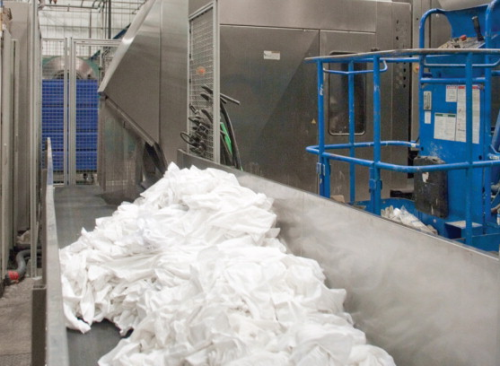
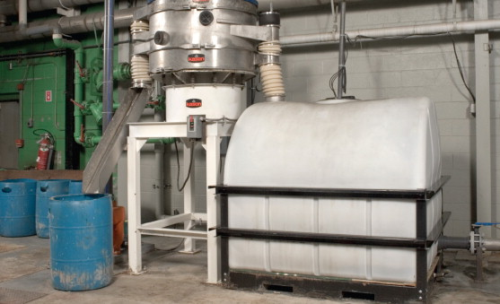
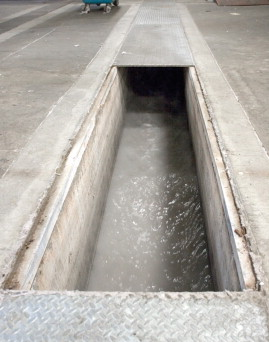
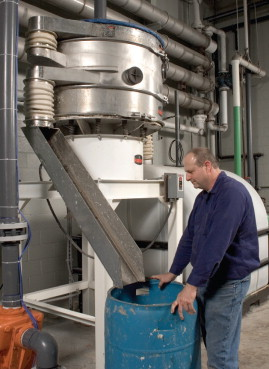
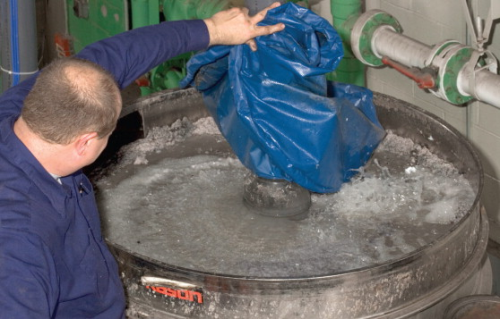
MacIntosh Services is one of the largest commercial linen rental supply companies in the scenic Lehigh Valley area of Northeastern Pennsylvania, USA. From its headquarters, the company supplies not only table linens and cloth napkins, but also uniforms, chef's apparel, aprons and towels to restaurants, hotels and other facilities throughout Pennsylvania and New Jersey.
In order to process this large volume of laundry, the company uses over 340,650 litres of clean water a day. In fact, MacIntosh Services is the largest single user of municipal water in the Bethlehem metropolitan area.
Recycling reduces water consumption
In the course of its operations, the company generates up to 283,875 litres of wastewater a day. “We try to recycle and reuse at least 40 per cent of the wastewater we generate,” says Gary Shaffer, chief engineer.
In 1996, MacIntosh Services installed a 1219 mm diameter Vibroscreen circular vibratory screener from Kason Corporation with an 80-mesh (178 mm) screen to remove most of the larger solid waste particles before treating the wastewater using standard aeration and flocculation procedures. “The residue from the screener contains all sorts of solid waste, including not only lint, but also food particles, corks and even gloves,” says Shaffer.
The circular vibratory screener separates bulk solid materials from solids and slurries using multi-plane, inertial vibration that causes particles to pass through apertures in the screen while oversize particles travel across the screen surface in controlled pathways to the screen periphery where they are discharged. The in-line model installed here features one imbalanced weight gyratory motor mounted directly beneath the screening chamber and operates continuously.
Internal hollow rings prevent screen blinding
A Kleen-Screen rings anti-blinding device prevents fibrous, stringy and sticky materials from blinding the screen. The multi-plane inertial vibration of the screener causes the rings to move continuously across a perforated stainless steel plate, shearing fibres and scraping away gummy materials. Because they are hollow, the rings promote product flow over the entire screen surface, maximising screening efficiency.
The untreated wastewater enters the first compartment of a two-compartment wastewater pit, and then is metered into the Kason screener. The screened water discharges into a 4,731 litre storage tank from which the water is pumped through a four-pass heat reclaimer to pre-heat incoming city water. The wastewater is then pumped to the second compartment of the wastewater pit, pumped again to an 18,925 litre storage tank, and then to the wastewater pre-treatment system.
Recycle screening deck increases capacity
As the business continued to grow, the volume of wastewater generated began to exceed the capacity of the 1,219 mm diameter screener. “We really needed to go to a 1,524 mm unit, but the space we had available simply did not permit it,” says Shaffer. “Our solution was to add a Kason recycle screening deck on top of the existing screener, increasing its capacity from 378–568 litres to 851–946 litres per minute without increasing its diameter. Retrofitting our existing screener also undercut the cost of purchasing a new 1524mm unit significantly.”
Positioned directly above the screening deck, the recycle deck has a screen of identical mesh. The upper screen deck is fed with more material than it can efficiently screen. Material passing through the upper screen deck is directed to the unit's discharge outlet. The overflow, along with all oversize solid particles, is directed from the upper screen onto the lower screen of the same mesh, where it is screened in normal fashion.
The effluent is treated in an on-site aeration and flocculation facility to remove solid waste, and then returned to the City of Bethlehem to be further treated and added to the municipal water supply, or reused at MacIntosh Services. The solid waste is removed in the form of sludge, which is dewatered and pressed into cakes. “We remove 305–457 tonnes of sludge a year,” says Shaffer. “In fact, the water that we treat and return is sometimes even cleaner than the city water we use originally.”
“Rapid changes in technology continue to affect every aspect of our business,” says Jim Rodgers Jr., president. “We continue to invest our resources in new technologies that will help us streamline our operations, increase our efficiency and improve customer service.”




